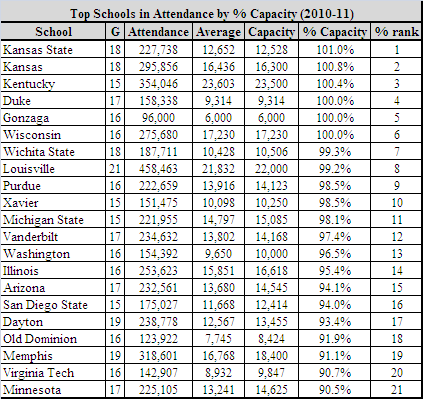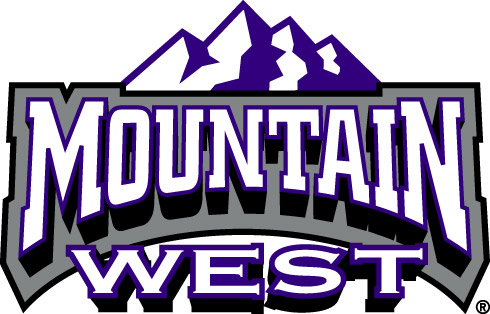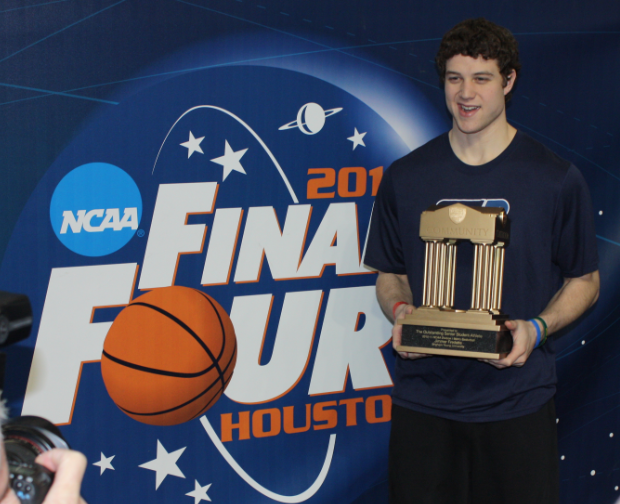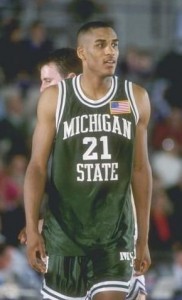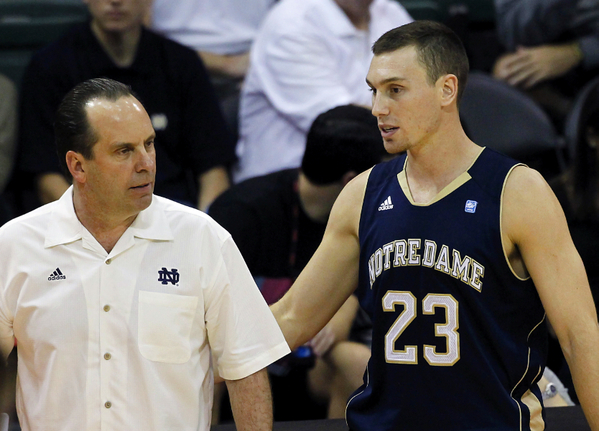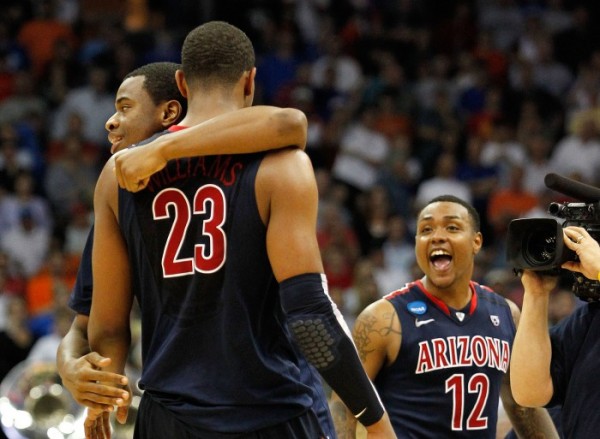Posted by KDoyle on March 17th, 2011

Kevin Doyle is an RTC Contributor.
Call it what you want with this seemingly erroneous preamble of the NCAA Tournament known as the “First Four,” but the opening game of this year’s edition of the Dance could not have been much more entertaining. We have already had a clutch shot in the final seconds and an overtime game under our belts. Many people will not even remember that UNC-Asheville and Arkansas-Little Rock even partook in the Tournament, but for a few hours last evening the stage was all theirs. Even if it is merely a play-in game—errr, first round game—this is the NCAA Tournament and keen basketball observers were no doubt glued to their screens and smartphones last night tracking the game.
Just as a refresher in case you missed yesterday’s look into the Other 26 teams in the East and West Regions, I elected to break down the 16 teams by inserting each into one of the four categories: 1) Have a legitimate shot at actually advancing far into the Tournament; 2) Can win a game, but not much more; 3) If their shots are falling and their opponents are not, they have an outside shot; and, 4) We are just happy to be here.
Ability to advance to the second weekend
(8, Southwest) UNLV—After the conclusion of the 2010 Tournament, there is no doubt that a bitter taste was left in UNLV’s mouth. The Runnin’ Rebels lost to Northern Iowa in the final minute and then two nights later, in one of the gutsiest shots in Tournament history, Ali Farokhmanesh drilled a three from the wing to seal the victory over Kansas. UNLV had to painfully watch the remainder of the Tournament and endure the arduous offseason pondering the question: “Why couldn’t that have been us?” Now, UNLV is in a similar situation, as they are in the 8 vs. 9 game again. They are an experienced bunch with Tournament experience under their belts; if they are fortunate enough to get by Illinois, they will ironically play none other than Kansas.
(12, Southwest) Richmond—The Spiders were upset by St. Mary’s last year, and this year they are the ones who will have to be playing spoiler. Richmond has arguably the most dynamic player in the field with 6’10 senior forward Justin Harper. To make a comparison, Harper is the Atlantic 10’s version of Dirk Nowitzki. Although he spends most of his time inside the arc, his ability to step outside and hit a three poses endless match-up problems for opponents. Harper is complemented nicely by his running mate Kevin Anderson. Richmond matches up well against Vanderbilt, but containing John Jenkins—maybe the best shooter in the Tournament—will be a challenge. Expect a variety of match-up and 2-3 zones from Chris Mooney.
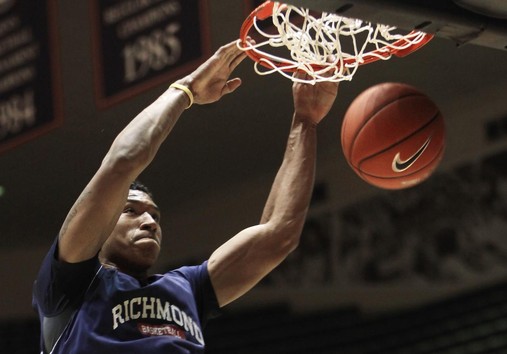
Harper is a Tough Matchup for Vandy
(3, Southeast) BYU—It is painfully obvious that the loss of Brandon Davies has detrimentally affected BYU’s play considerably; in the first game after his absence the Cougars were thrashed by New Mexico 82-64 on their home floor. While there is little doubt that Jimmer Fredette is the face of the program and their top player, the country is now officially seeing that there is much more going on in Provo, Utah, that can be attributed to BYU’s success other than simply Fredette. While a deep run no doubt becomes more difficult without the services of Davies, the backcourt of Fredette and Jackson Emery has the ability to carry the Cougars to the second weekend.
(9, Southeast) Old Dominion—ODU presents all of the intangibles to be successful in the Tournament. They have an intelligent and proven coach in Blaine Taylor, a senior-laden team with NCAA experience, and the confidence that they belong here and can win—especially after knocking off Notre Dame as an 11 seed last year. It is more than merely intangibles for ODU though. The Monarchs are quite possibly the best rebounding team in the field, incredibly tough on the defensive end—according to Frank Hassell: “We go 50% man and 50% zone”—and run a deliberate offense that minimizes their opposition’s possessions. Blaine Taylor has created a formula for his team to have success in the NCAA Tournament.
Read the rest of this entry »
| 2011 ncaa tournament, Regular Features, the other 26
| Tagged: akron, alabama state, ali farokhmanesh, arkansas-little rock, blaine taylor, boston university, brad stevens, brandon davies, butler, chandler parsons, chris mooney, d.j. kennedy, erving walker, fairfield, florida, frank hassell, gonzaga, ian clark, iona, jackson emery, jacob pullen, jimmer fredette, jio fontan, joey rodriguez, john holland, john jenkins, justin harper, kansas, kansas state, kenneth faried, kevin anderson, louisville, matt howard, morehead state, n.c. asheville, noah dahlman, northern iowa, notre dame, old dominion, orlando johnson, richmond, rick byrd, robert sacre, shaka smart, shelvin mack, st johns, st peter's, steven gray, stew morrill, stony brook, tai wesley, tyler newbold, ucsb, unlv, usc, utah state, utsa, vanderbilt, vernon macklin, virginia commonwealth, wisconsin, wofford
Share this story





























